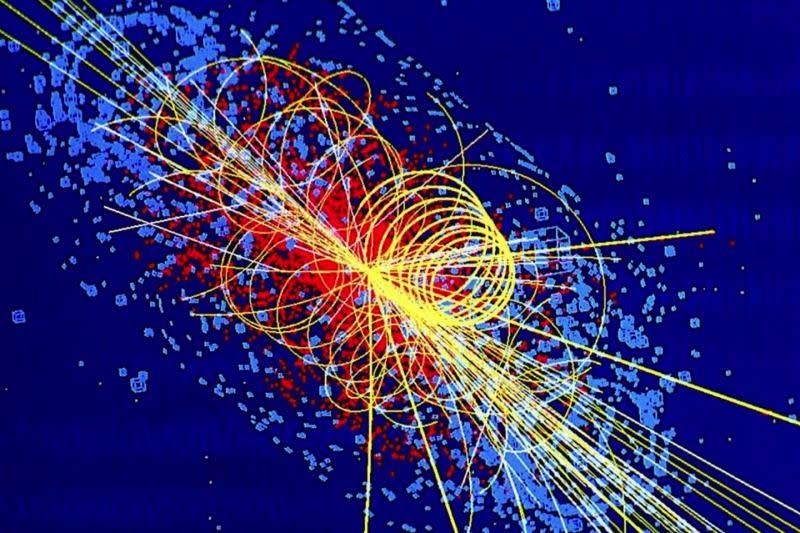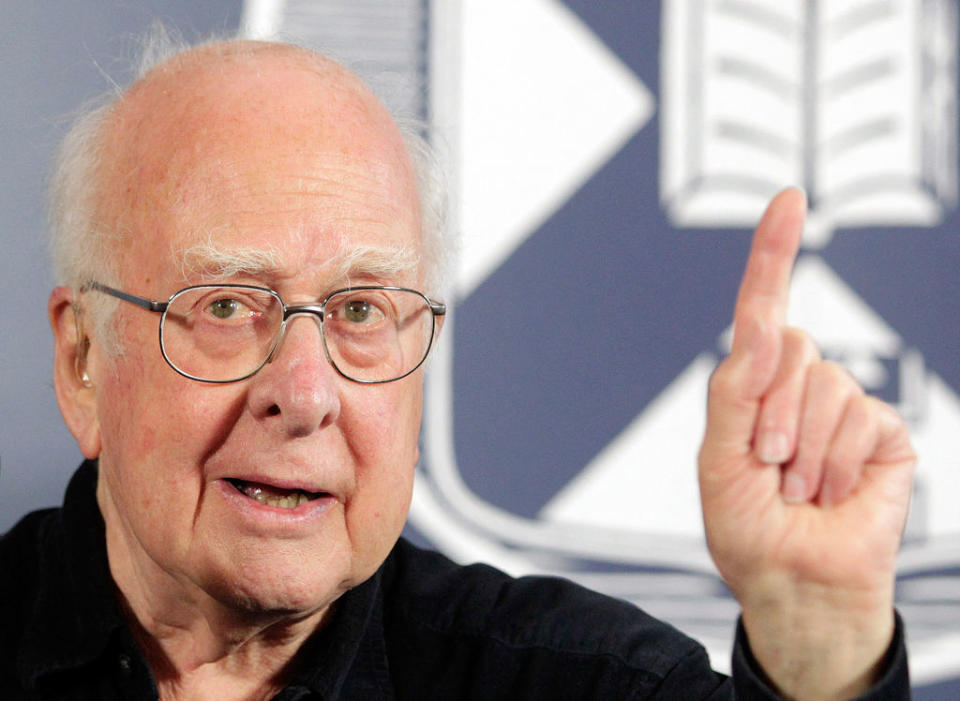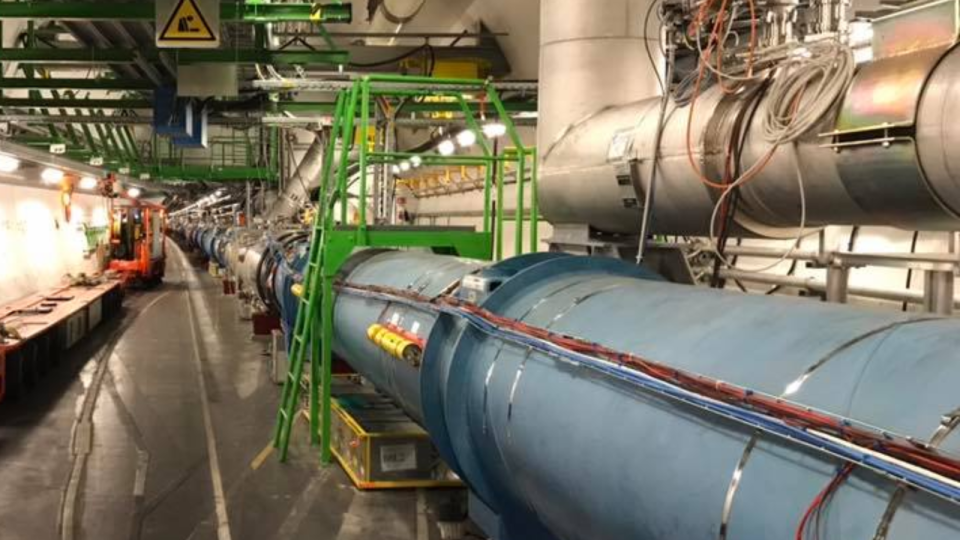On April 8, 2024, British theoretical physicist Peter Ware Higgs died at the age of 94. It was almost twelve years ago, on July 4, 2012, in a rather inauspicious lecture hall in Geneva, Switzerland, when Higgs became an icon. figure in modern science.
That was the day it was announced that collisions between particles at the Large Hadron Collider (LHC) facility – perhaps the most ambitious and daring scientific experiment ever – revealed the existence of the Higgs boson.
The discovery of the Higgs boson, named after Higgs himself, has been of crucial importance to the field of particle physics. It was the last resident of the particle zoo needed to complete the so-called ‘Standard Model of Particle Physics’, the best description we have of the universe at the smallest scales.
For the Higgs, born in Newcastle upon Tyne in Britain to a Scottish mother and an English father on May 29, 1929, the moment was met with an outpouring of emotion. This was not surprising, as this announcement culminated five decades of his work and confirmed a theory he refused to abandon.
Related: Higgs boson: The ‘God particle’ explained
In addition to the culmination of the Standard Model, the discovery of the Higgs boson indicated the need for physicists to explore physics beyond the parameters to which they were accustomed, thereby setting the course for physics for decades to come.
“Peter Higgs’ contribution to modern physics is absolutely outstanding,” Luz Ángela García Peñaloza, a cosmologist at Universidad ECCI in Colombia, told Space.com. ‘His work in the field of quantum field theory led to a theory for which he would later receive the Nobel Prize in Physics and which explains the mechanism that provides fundamental particles with mass.
“He was way ahead of his time.”
50 years of searching for a single particle
The 20th century marked the birth of particle physics as a discipline in its own right and saw tremendous advances in this emerging field. But as that century drew to a close and the particle zoo grew in population, physicists began to wonder why some particles had mass while others, especially light particles called “photons,” did not.
In 1964, physicists studying the weak nuclear force, one of the four fundamental forces of nature that govern the atomic decay of elements by transforming protons into neutrons, came to a surprising conclusion.
The carriers of this force, W and Z bosons, should be massless – but the fact that the weak force appeared strong over short distances and weak over long distances meant that they could not be massless. If it did, it would risk violating an important rule of physics called symmetry, which ensures that the laws of nature are the same no matter how they are viewed. According to CERN, you can think of the symmetry problem as analogous to a pencil on its point – a symmetrical system – suddenly tilting and pointing in a preferred direction, destroying its symmetry.
In 1964, Peter Higgs, François Englert and Robert Brout proposed a solution. There could be something, they said, that “tempts” nature to spontaneously break symmetry. So, what could that something be?

Higgs and colleagues thought that when the universe was born, it might have been filled with what’s called “the Higgs field,” in a symmetrical but unstable state, like that precariously balanced pencil.
In just fractions of a second, that field, the ‘Higgs field’, would find a stable configuration, but the symmetry would be broken in the process. This in turn gives rise to something called ‘the Brout-Englert-Higgs mechanism’, which assigns mass to the W and Z bosons and resolves the discrepancy.
While this would have been an essential theory in itself, it was later discovered that the Higgs field would add mass to many other fundamental particles, and that the force of these interactions would give different particles different masses. This meant that, if confirmed, the theory would have major implications for science.
The next step was to obtain that confirmation in the form of the discovery of a particle that would act as a ‘messenger’ for the Higgs field: the Higgs boson.
This search would justify the construction of the LHC. At 27 kilometers long, it is the largest particle accelerator ever built, at a cost of approximately $4.75 billion.
“Higgs’ work is a major reason why the LHC was built in the first place,” CERN experimental high-energy physicist Nima Zardoshti told Space.com. “His predictions provided some of the crucial theoretical guidance on the energy range the LHC needs to potentially find new physics.”


In 2012, those costs and ten years of effort by an international collaboration of 23 CERN member states paid off.
A cascade of particles emerged from the decay of Higgs particles and was captured by both the LHC ATLAS detector and the Compact Muon Solenoid (CMS) detector. This was the necessary confirmation for the Higgs field theory.
Higgs and Englert would share the 2013 Nobel Prize in Physics for the breakthrough.
“In Professor Peter Higgs, physics has lost a gentle giant of the field,” said Suzie Sheehy, associate professor of physics at the University of Melbourne and visiting lecturer at the University of Oxford, in a press release. “Higgs’ work is rightly celebrated as an incredible achievement of curiosity-driven research: his 1964 proposal on the possible existence of the Higgs field and its related particle, the Higgs boson, seemed an obscure idea at the time… There are many theoretical mechanisms put forward to explain unknowns in fundamental physics.
“It then took almost 50 years – and about 13,000 other scientists and engineers – to build the experiments (ATLAS and CMS) that allowed the Higgs boson to be discovered at the Large Hadron Collider in 2012.”
Sheehy added that less is known how curiosity-driven research has had a huge practical impact on our lives, producing unimaginable spin-offs such as the World Wide Web and better cancer treatment technologies.
“Higgs’ story represents an important lesson for all of us about how science works: he is said to have been the first person to point out that science does not happen over the span of a few years,” Sheehy said. “We need to ensure long-term support for curiosity-driven research if we are to achieve the kind of breakthroughs in our understanding of the universe that Peter Higgs is praised for.”


“Even though we have now discovered it, accurately measuring the properties of the Higgs boson still remains one of the most promising ways to explore physics beyond the Standard Model,” Zardoshti added. “Higgs’ work has shaped the field for many years to come and will continue to do so, and is possibly the greatest success story of theoretical physics of the 21st century.”
As a science reporter, Higgs’ legacy has also personally influenced my life.
Related stories:
– How the successor to the Large Hadron Collider will hunt for the dark universe
— Dark matter may be hiding in the particle jets of the Large Hadron Collider
— The Large Hadron Collider may be closing in on the universe’s missing antimatter
On July 4, 2019, I was invited to visit the LHC during its shutdown and upgrades, get an up-close look at the ALICE detector, and explore miles of tunnels under France and Switzerland where the collider is housed.
Before that, I attended an orientation session at CERN in Geneva, together with a number of other journalists. Many of us realized that on that day it had been exactly seven years since the announcement of the discovery of the Higgs boson, and that we were sitting in the room where Peter Higgs once shed tears as he heard confirmation that his theory had become reality. I was able to quickly get a very bad picture of that hall. I made sure to take this photo from the perspective of the chairs where Higgs was sitting, to see what he would have seen on that memorable day.


The moment gave me goosebumps. It still does.
I have often written about how the discovery of the Higgs boson was essential to our understanding of physics, and I would do so many more times. Yet, in that lecture hall, I felt a connection to that moment, and I know that many who have been there since have felt that connection as well.
Imagine an unquantifiable field that extends across time and space to give metaphorical weight to a single, vital moment that changed everything—a field that can connect everyone who learns about that moment itself.
I think Peter Higgs might have liked that idea.